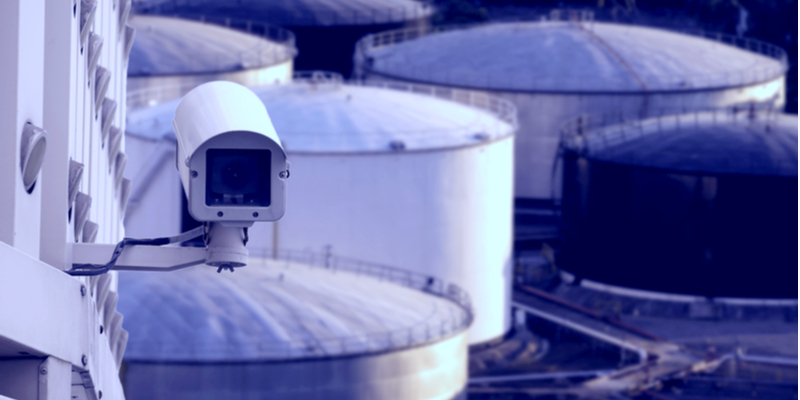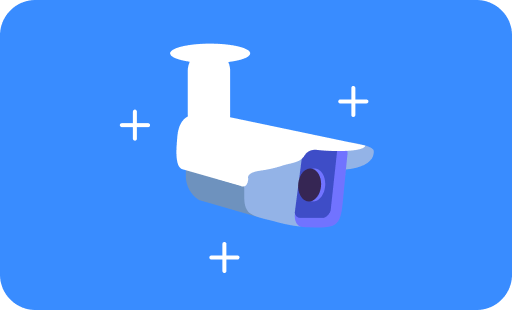3 ways the energy sector can improve physical security in 2022 [+ bonus tip!]
- Security for businesses
- FILTER_Security for businesses

There is enormous pressure on the utilities sector to remain secure and resist attack. Energy facilities - including power plants and power grids - are a core part of critical infrastructure that keeps millions of homes, public services and businesses working. If any part of this vital network were compromised, it could cost an energy company vast sums in compensation.
Businesses have many competing demands on their budget. Energy firms must also invest in their operations and management to keep providing fast, reliable and cheap power to their customers. However, crime, vandalism and politically-motivated or terrorist attacks are a constant threat which energy companies should prepare for.
We look at 3 key areas where utilities firms can improve overall physical security - as well as some cost-effective, simple methods to do it. You can find even more advice and resources in our Utilities Resource Hub:
1. Securing your energy company on a reduced budget
Energy companies have had to contend with volatile oil prices, labour shortages and extreme supply chain delays as a result of Covid. According to PwC:
"Electricity demand is down significantly in many territories and the market for transport fuel has shrunk dramatically as planes are grounded and movement restricted."
Like many businesses around the world, energy companies are under pressure to remain profitable and spend within a restricted budget. That includes spending on physical security. For critical infrastructure companies, cutting security budget is simply not an option - so how can energy firms do more, with less?
A good physical security system is worth much more than the sum of its parts. Access controls are a core element of utilities security, protecting facilities from crime and attack. They create secure entry and exit points, protecting the building and only permitting certain employees to high-security zones. Similarly, perimeter defences such as fences, trip wires and motion detection, work to keep intruders out.
However, energy plants are large and remote, which often makes them difficult to monitor. It is possible for people to get through perimeter security, and even to tailgate their way past access controlled doors. This is where remote monitoring systems like video surveillance come in. CCTV cameras make it much easier for operations or security staff to have a comprehensive view of who enters and exits the facility.
Keeping an eye on multiple cameras is still highly challenging, even for the best security staff. Over long shifts guards can get tired, lose concentration and become distracted by false alarms. When security cameras are enhanced with intelligent video analytics, it makes the job of guarding much easier, as AI can consistently and accurately spot potentially suspicious activity, whilst filtering out any distracting noise.
For example, if someone is tailgating an employee and attempting to gain unauthorised access, intelligent video analytics can identify if they have been loitering around a doorway for a suspicious amount of time. Analytics can also identify if that person has been spotted across different cameras on the same site. To find out more ways that intelligent video analytics can protect a power plant, take a look at all of Calipsa’s Pro Analytics features.
If you choose a flexible and easy-to-integrate option, then intelligent video analytics can add an enormous amount of value to your existing video surveillance system. This means that rather than spending a large amount of time and money on upgrading your video surveillance system, it is possible to extend the lifespan of your current setup, simply by integrating analytics that can extract greater value from the video you already have.
Integrating analytics also transforms what was previously hours of unused video footage into actionable intelligence. That unused video footage is known as 'dark data'. You can learn more about it in this video:
Analytics not only makes sense of your security footage, it can also help you gain a better understanding of your plant and its risks. By spotting trends, you can adapt your security strategy to become more effective - and you can do it in a more agile way, since you can act on a regular flow of up-to-date information.
2. Securing your wider energy network / power grid
For an energy company, it’s vital that you secure your power plants, but you should also be thinking beyond your plant’s perimeter. Pylons and generators are, like power plants, often in remote places that are difficult to monitor and access regularly.
Having a remote monitoring system allows you to oversee your entire network more frequently, since it is often impractical to have employees check these remote assets in person every day. Covering multiple angles of each site with cameras is a cost-effective way to keep an eye on multiple sites, with a rapid security response team for any criminal activity or other attacks.
Such a large network means a lot of cameras - and in remote outdoor areas, it is highly likely your security team will be fielding a lot of false alarms. These are usually triggered by wildlife, spider webs on camera lenses, or trees moving in the wind. Intelligent video analytics like Calipsa will help to cut out all of this noise, with smart alerting that can also provide all of the benefits that we looked at above for a facility: loitering, people counting, crowd forming and camera scene change (to monitor camera tampering or faults).
3. Cybersecurity for the energy sector
Just as you need to think beyond the perimeter of your plant when looking for threats, nowadays you also need to think beyond just physical security - since many threats are now related to your company’s digital safety.
Like many businesses, energy companies are automating processes wherever possible and using technology to work more efficiently and safely. Advanced machinery and operational technology are all connected together - and are also usually connected to the internet. This network of interconnected online devices is known as the Internet of Things (IoT), and it can pose a severe security risk. Hackers can use easily-compromised devices to gain entry to the rest of a company’s network.
For energy companies, the risk - and the stakes - are much higher, since so many people depend on their services. The SolarWinds attack of 2020 is a prime example: while the attack was on one company, it affected thousands of organisations who also used the software, including the US government. It is thought that 25% of electric utilities in the North American power grid use SolarWinds, and the long-term effects of this particular hack are as yet unknown.
As a result it is vital that you secure your own network as much as possible, to make it harder for successful attacks. While your operational technology needs to be protected, you should also bear in mind any other connected devices you use around your facility - which can include security devices like security cameras. In our ebook on video surveillance cybersecurity, we explain how to protect your security devices from attack, as well as more general cybersecurity best practices. Find the ebook in our dedicated Utilities Resource Hub:
[BONUS TIP!] Optimise Operations and Health & Safety for even better security
Intelligent video analytics can help you get so much more from your video surveillance system, well beyond the parameters of physical security. It can especially help your operations and management (O&M) team to have a more comprehensive overview of everything that goes on in your power plant. While operational technology has automated many of an energy facility’s processes, your O&M professionals still have a lot to manage on a daily basis.
By incorporating video analytics, you have transformed hours of unused video footage, or ‘dark data’ into useful information. (See more about dark data in Section 1). Criminal activity doesn’t take place every day, but your cameras are always recording what goes on in your facility. Adding AI can help busy O&M staff to pick up on situations such as too few people present on the floor with a simple alert. Instead of having to tour a facility, a simple tannoy announcement is all that’s needed to make sure employees know where to be.
Once a machine learning algorithm learns what to look out for, it can tell you about any anomalies. Analytics can therefore pick up on anything that looks out of the ordinary in your plant - for example, if some equipment is not operating as it usually does. In fact, with analytics-powered thermal cameras, it would also be possible to see if any generators or other equipment are not their usual temperature, which could provide you with an early warning of a fault that could turn out to be dangerous.
Intelligent video analytics can be a huge help with workplace health and safety in power plants. Energy facilities are highly secure places, but staff must always be vigilant in observing safety standards, which your cameras can help them to do. For example, if they are required to wear equipment such as hi-vis vests or safety helmets, analytics can trigger an alert if someone is spotted without their safety gear.
Having more detailed insights into your facility’s day-to-day activities can then help your O&M and security staff to be better informed when they have to make risk assessments and carry out safety training. There might be certain hotspots for slips and falls that your cameras have picked up on. Or, when operating heavy machinery or working with tools, it might have become apparent that processes or layout could be changed to improve the working environment - for example, analytics might pick up that people are crowding in certain areas because of where entry/exit points are in relation to the equipment. If crowd-forming alerts are triggered regularly this could be a hazard that needs addressing. In the long term this would ensure a safer environment, especially in the event of emergency evacuation.
Most importantly, a safe environment also means a secure environment; with streamlined processes and a safe, well-ordered working environment, it is easier to implement protocols that will help maintain high security standards. So not only are your employees safe, they are also helping to promote a secure energy facility - and as a result, a protected energy network for your customers.
Want more advice and insights into how to protect your energy company? Check out our Utilities Resource Hub:








No comments